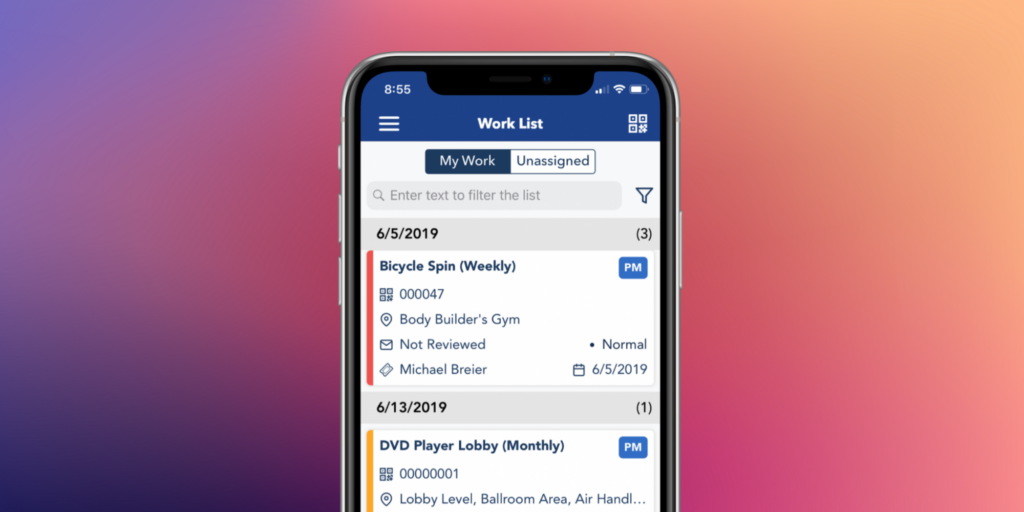
The Advantages of Preventive Maintenance
The term preventive maintenance commonly refers to the practice of regularly servicing equipment on a pre-determined schedule so that it does not develop catastrophic failures and performs better over its useful lifecycle.
Although it is well known that equipment routinely serviced on a pre-determined schedule outlasts equipment that is not, many companies still indulge in the practice of neglecting equipment and/or only responding reactively to equipment failures.
This is unfortunate as the preventive maintenance of assets has even greater implications in today’s economy. Preventive maintenance has a number of powerful advantages that make it worth utilizing. Because of these advantages, more and more companies are starting to realize the importance of taking proper care of their equipment.
Five Advantages of Preventive Maintenance
- Extends the useful lifecycle of assets decreasing the need for capital replacements.
- Enhances the efficiency of equipment keeping them running more efficiently and lowering power expenses.
- Enhances the performance of assets by increasing uptime.
- Enhances customer (internal or external) service because maintenance teams have less unplanned maintenance and can respond quicker to new problems.
- Contributes positively to the reputation of companies
Tying Profits to the Advantages of Preventive Maintenance
Preventive maintenance doesn’t just enhance the lifespan of regularly used equipment, it enables higher performance. How well equipment performs depends on a huge number of factors ranging from the quality of the equipment in use to environmental factors.
However, generally speaking, well maintained equipment performs better than poorly maintained equipment. Companies that take the time to maintain their equipment on a regular schedule typically get the best performance possible out of their equipment.
The performance of company equipment is often intimately related to profits. Many companies rely heavily on their equipment, and the more efficiently and smoothly their equipment performs, the more profit they can make.
While it is true that in the short run companies that do not spend time maintaining their equipment well can make more money, in the long run their equipment will end up performing more poorly, and they will end up losing a great deal of money.
Preventive maintenance doesn’t just increase what managers can get out of equipment, it also makes it possible for managers to save money on power costs. Equipment that is poorly maintained typically requires more electricity or fuel to run.
This increase in electricity or fuel use may seem trivial at first, but it typically ends up costing companies a great deal. While these costs may end up remaining hidden, they still end up negatively impacting the bottom line.
Quality equipment only stays quality equipment if it receives the level of care it deserves
Equipment that is routinely serviced on a regular schedule usually requires no extra electricity or fuel to run even after years of use. Often companies will make the extra effort to purchase high quality equipment (knowing that in the end they will save money), but they overlook the importance of maintaining equipment properly.
Failing to adequately service high quality equipment ends up costing companies a great deal of money that could otherwise go towards enhancing the bottom line.
Preventive Maintenance Enhances Customer Service and Reputation
Preventive maintenance can also help companies to provide customers (internal and external) with better customer service. Because regularly scheduled maintenance enhances equipment functioning, companies that practice it can offer their customers more reliable service.
Many customers are just as interested in the reliability of services as their quality. While a number of companies make the mistake of assuming that customers care only about the quality of service they deliver, most of the best companies realize that consumers don’t want great service delivered on an unreliable timetable. Consumers want both quality and reliability, and companies that realize this are the best positioned for growth.
Companies that are able to produce their products on a reliable schedule or offer reliable services find themselves acquiring very good reputations. Businesses live and die based on their reputations and anything companies can do to enhance their reputations is something they should at least consider.
While not all reputation boosting moves are worth taking, preventive maintenance yields so many benefits in so many areas at so little cost that it is clearly an intelligent strategy for companies to adopt.
Companies that neglect their equipment and ignore their reputations may temporarily prosper in the short run, but ultimately they will be displaced by reliable companies with excellent reputations. Only companies that work on cultivating long-term positive relationships with customers have a good chance of surviving in an increasingly competitive marketplace.
Although television and newspaper advertisements certainly have their place, nothing advertises a company better than word of mouth. Building up loyal customers willing to engage in word of mouth advertising is an essential move if companies are to have any chance of achieving long-term success.
How to get the most from Preventive Maintenance
A lot of the drive behind the new emphasis on preventive maintenance stems from fundamental changes in management philosophy. A new management philosophy known as Enterprise Asset Management (EAM) is beginning to become more popular with many CEOs and managers.
The basic premise of an EAM is that companies need to focus on optimizing operations from the perspective of long-term corporate growth. This approach stands in stark contrast to the typical corporate emphasis on short term profits.
Companies interested in implementing preventive maintenance strategies should start gradually. Often the best way to start out is by researching EAM software and looking at the structure of normal repair operations.
The switch from reactive maintenance to preventive maintenance does not usually occur overnight, but with time and training it can occur after a moderate period of time.
The main key is to use appropriate software and to spend adequate amounts of time training staff. The software is important because preventive maintenance is not really realistic on a large scale without appropriate software tools.
Training should not be overlooked either as training staff adequately is essential because people often need help adjusting to the outlook required for preventive maintenance to be successful. If all of the above factors are taken care of, the switch to preventive maintenance is almost guaranteed to be a success.







